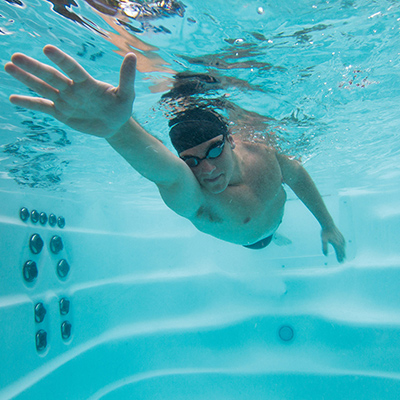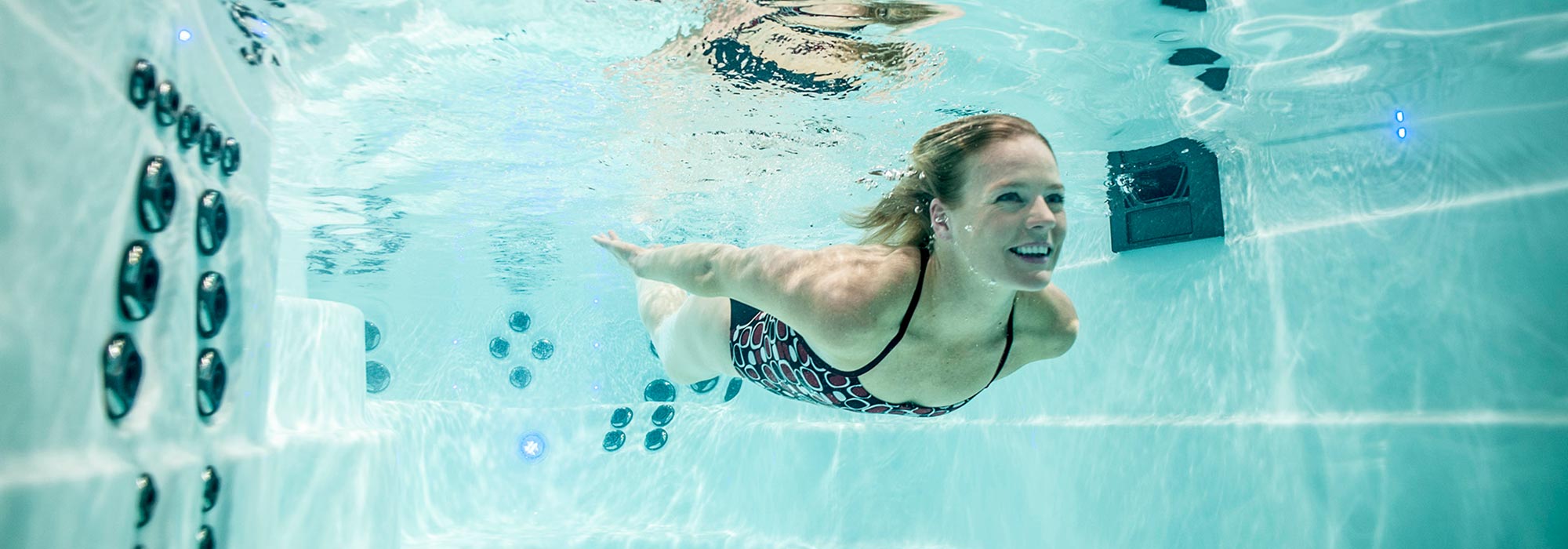
Swimming for Fitness
Swimming is not just a way to cool off on a hot summer day. With its unique combination of resistance and buoyancy, swimming offers a full-body workout that benefits everyone, regardless of fitness level. Whether you're a seasoned athlete or learning to swim for the first time, the water provides a gentle and effective way to improve your health and well-being.
Benefits of swimming for fitness and overall health
Swimming gives your body a great workout without the impact of land-based exercises. It exercises most of the major muscle groups in your body. It's also a gentle way to improve your level of fitness, whether you're a seasoned athlete or just starting your exercise journey.
- Exercise easier
- Reduce stress and boost your mood
- Improve strength and fitness
- Versatile workout solution
- Lowers the risk of diabetes
- Manage weight
- Swim at any age
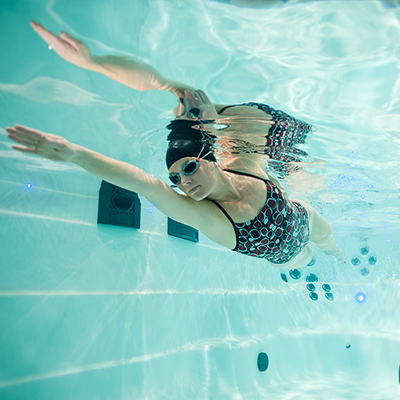
Exercise easier
Exercise is great for your body, but it can also be hard on it. Activities like running can put significant stress on your joints, leading to discomfort or injury over time. Swimming, however, provides an effective full-body workout without the strain. It is gentle on your joints and muscles while still helping you build strength, endurance, and flexibility.
Water's natural buoyancy helps reduce the impact of gravity on your body, providing significant relief to your joints. For instance, when standing in waist-deep water, your body carries only about 50% of its weight. In chest-deep water, that support increases, with the water bearing up to 70% of your weight.
H2X Swim Spas come in two depth options — standard and deep. Models such as the H2X Trainer 15D have a water depth of 51 inches, which allows many people to exercise in chest-deep water.
If traditional exercise is uncomfortable, swimming can be an excellent way to start your fitness journey. The water cushions your movements, reduces discomfort, and allows you to move more freely, making it an ideal setting for both gentle exercise and building strength over time.
Reduce stress and boost your mood
Swimming is a great exercise for your body. However, as you move through the water, you are also doing something good for your brain. Research shows that swimming triggers a release of the hormones serotonin and dopamine, which are known to boost mood, reduce stress, and promote an overall sense of well-being. The water exercise has even been shown to help manage feelings of anxiety and depression.
Research has shown that getting in the pool is the perfect way to unwind after a busy day. In a study by Speedo, 74% of those surveyed agreed that swimming helps release stress and tension. Results also revealed that swimming is the ideal "feel good" exercise with 68% saying that being in the water helps them to feel good about themselves.
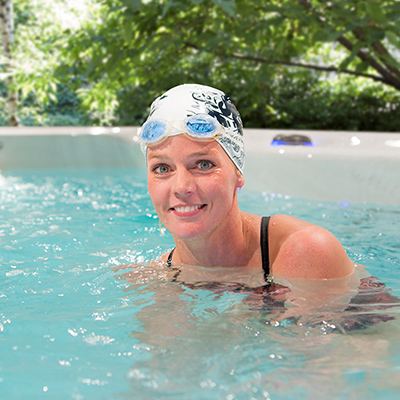
Improve your strength and fitness with swimming
Swimming works a variety of muscle groups that help you move smoothly through the water. Your core abdominal and lower back muscles keep your body steady and reduce drag, while your deltoids and shoulders ensure your hands enter the water properly. As you pull through the water, your forearms provide extra propulsion, and your upper back muscles help stabilize your shoulders throughout each stroke. Plus, your glutes and hamstrings play a key role in keeping your body balanced and giving you that added push.
More than that, your muscles have to work against the natural resistance of the water, which helps to tone and strengthen your body effectively. Water's resistance is about 12 times greater than air, meaning that each movement while swimming provides an excellent form of strength training.
In addition to strength, swimming can boost your cardiovascular fitness. As you move through the water or swim against the current of the swim spa, your heart rate will increase. With regular swimming sessions, your heart becomes stronger, your lungs more efficient, and your overall endurance increases.
There's more than one way to swim
Swimming isn't just about doing laps at your local pool. Whether you're a seasoned swimmer or learning to swim as an adult, there are many ways to incorporate swimming into your fitness routine.
You can mix up your swimming routine by including different strokes into a workout. Freestyle, butterfly, backstroke, and breaststroke each target different muscles. Freestyle is great for cardio and core strength, while breaststroke is perfect for targeting the muscles in your chest, shoulders, and legs. Backstroke helps improve posture by strengthening your back muscles, and butterfly offers an intense full-body challenge. Each stroke not only works various muscles but also keeps your workouts interesting.
With an H2X Swim Spa, you have the freedom to swim without needing a full-sized pool. The swim spa's powerful current allows you to swim in place, giving you the experience of continuous laps without ever needing to turn around. It's like having an endless swimming lane right in your backyard. You can adjust the current's intensity to match your skill level, making it ideal whether you're a beginner or a seasoned swimmer looking for a challenge.
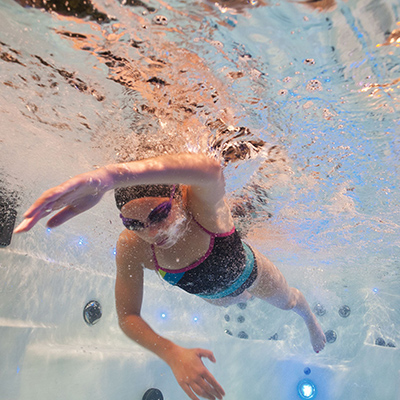
Lower the risk of diabetes
For people who are living with diabetes or want to reduce their risk of the disease, exercise can play a key role in their overall well-being. Regular activity, such as swimming, can help with weight management and lower glucose levels, among other benefits.
Swimming is an effective form of aerobic exercise, which can help you lower your A1c and improve your insulin sensitivity. As your muscles become more adept at using glucose for energy, there will be less sugar circulating in your bloodstream, effectively lowering blood sugar levels.
A strong heart supports better blood sugar control, which further reduces your diabetes risk.
Manage your weight
Getting in a good workout isn't always about reaching a number on the scale. However, swimming can help you reach your health goals — whether you want to lose weight or stay in a healthy range.
Swimming is a good form of exercise as it can burn a lot of calories. Depending on factors such as weight and intensity level, a person can burn more than 700 calories an hour. Even a leisurely swim can burn several hundred calories an hour while still providing resistance training benefits.
You can start swimming at any age
No matter your age or fitness level, you can start swimming. It's an ideal exercise for seniors and those recovering from injuries, as the water provides support while you build strength.
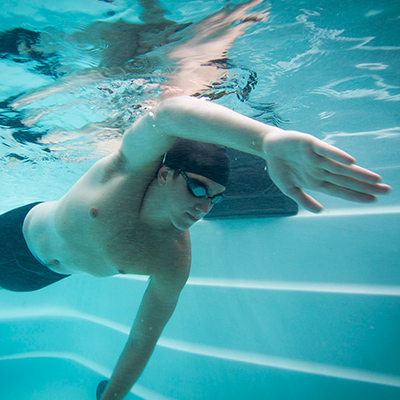
Who should swim
Swimming is a popular way to get active and stay active. According to the U.S. Centers for Disease Control, it's the fourth most popular recreational activity in the country with Americans making more than 300 million recreational swimming visits a year.
The activity doesn't have to be just about splashing around on a hot summer day. Swimming is perfect for those who want to start a fitness routine, manage stress, or complement a current training program.
- Beginners
- Athletes
- Seniors
- People with joint pain
Beginners: If you're learning to swim, the water offers a safe and supportive environment to build confidence and skills.
Athletes: For those training for a sport, swimming serves as a great cross-training option, improving cardiovascular fitness and muscle strength without the risk of injury.
Seniors: Swimming can help maintain mobility and independence as you age, providing a low-impact way to stay active.
Individuals with joint pain: Those with arthritis or other joint issues can find relief in swimming, allowing them to exercise without discomfort.
